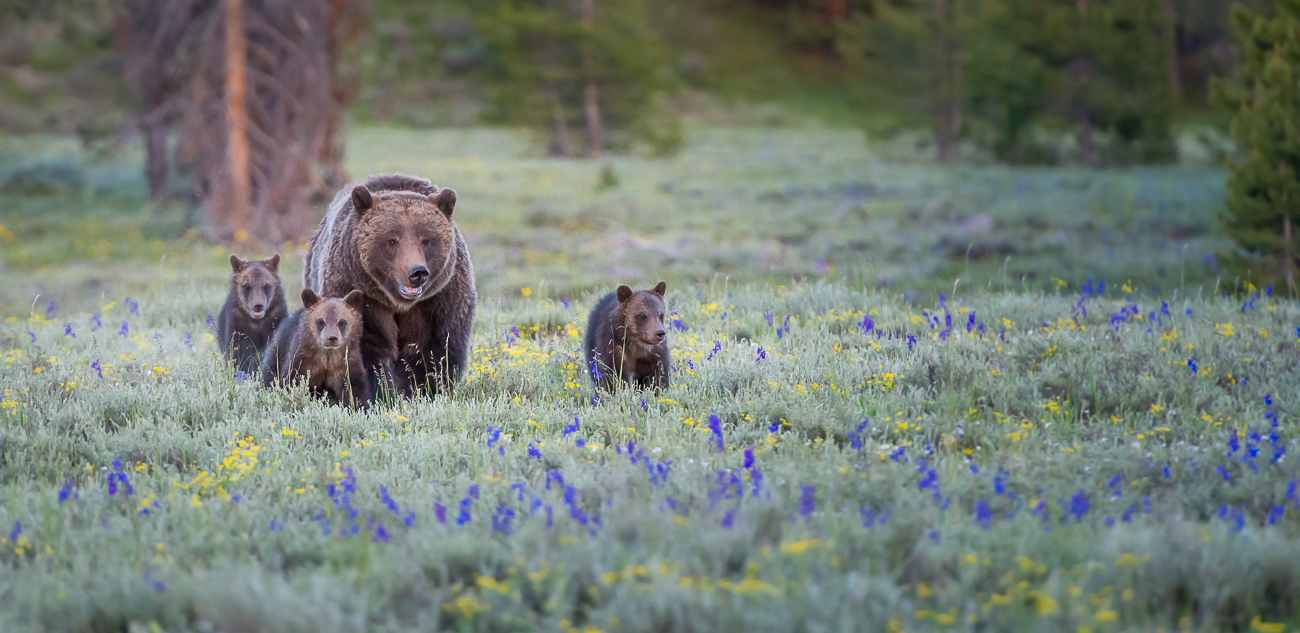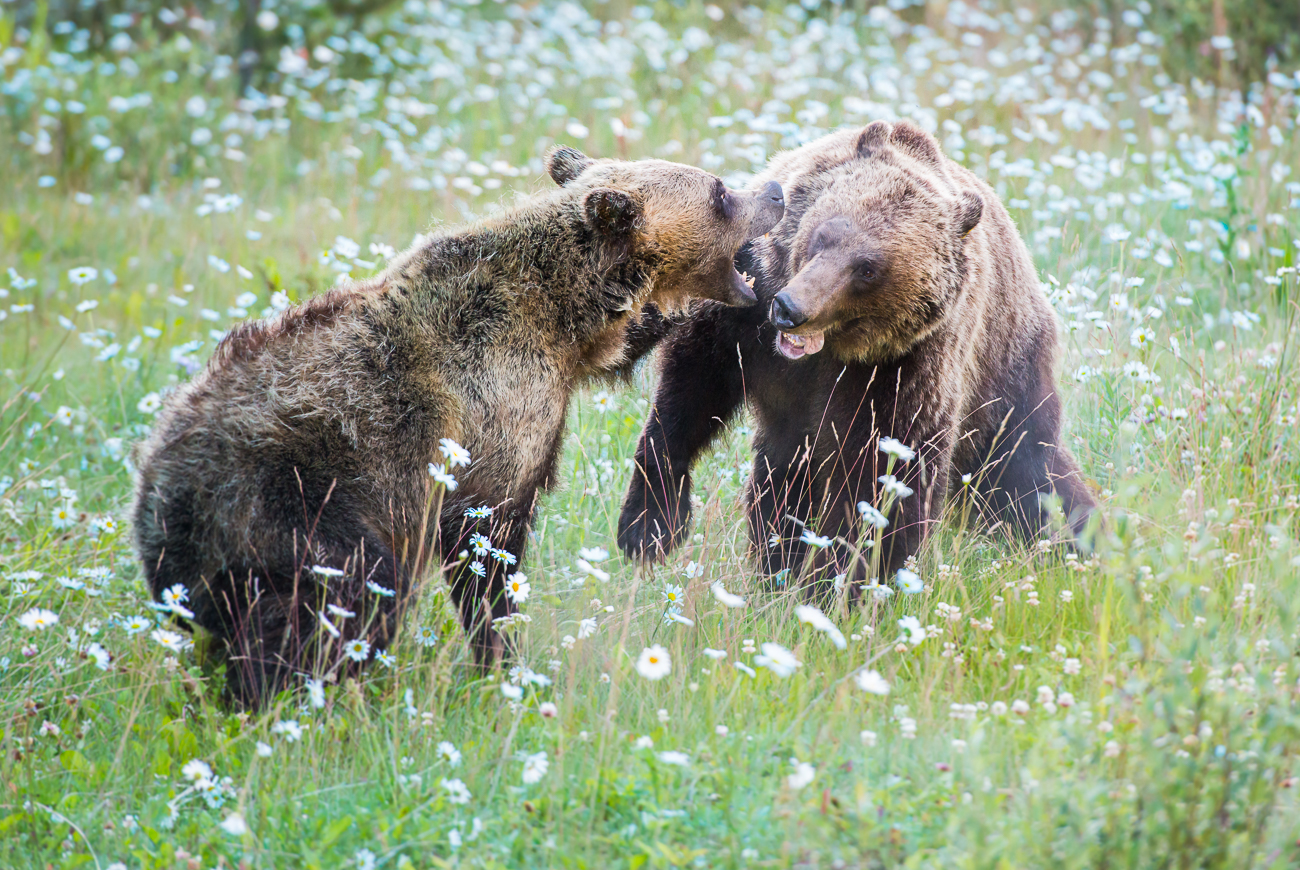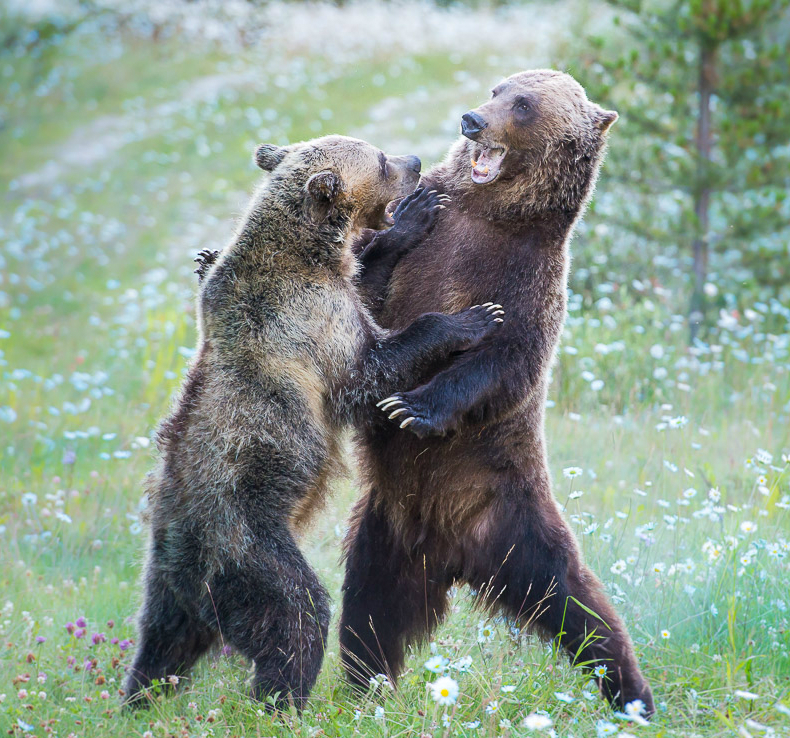Estimated Read Time: 5 minutes
Meet the Grizzly Bear
They are the top of this food chain. The quintessential keystone species. Drivers of biodiversity. Regulators of every aspect of the landscape. The very best indicators of ecosystem health.
We know this, just as we know that this big, strong, and fast omnivore is also the slowest mammal to reproduce in North America and amongst the most susceptible to change.
But for all we know about grizzlies, guess what? There’s so much more we don’t know.
Consider that many of us believe grizzly bears hibernate when winter comes a calling. They don’t.
Grizzlies do den during the winter months – their body temperature dips, their heart rate slows and their metabolism even changes. But it’s not a true hibernation that sees their bodies go completely dormant. They just slow down into what’s known as a torpor because they lack access to food.
Because they don’t hibernate, grizzlies can give birth in the den and, without food or water, can nurse cubs on their six – yes six – nipples.
Also, because they don’t hibernate? Grizzlies can get active in the winter – you know, stretch their legs, remind themselves how good the sun can feel on their face and even get at the spring early if, say, the snow levels aren’t what they should be.
Getting at it, of course, means eating, but as the snow melts, it also means, um, something else. Like getting to the tops of mountains to mate.
 Why do grizzlies climb to mountain tops for romance? No one knows. Maybe they like the view? And why is it important to know this? No reason. Sometimes it’s just fun to know useless facts about grizzlies.
Why do grizzlies climb to mountain tops for romance? No one knows. Maybe they like the view? And why is it important to know this? No reason. Sometimes it’s just fun to know useless facts about grizzlies.
A more useful fact? Grizzlies – though widely believed to loath people and human settlement – actually aren’t the worst animals at adaptation. In fact, grizzly sows and cubs thrive on roadsides. Kind of.
You see, big males truly do loath people and roads and other fun things we build. They stay away in deep wilderness. And since big males can be sometimes predators of wee cubs when, say, they stand in the way of a nice-looking lady bear, guess what? Roads suddenly hold a lot of appeal to sows with cubs.
In some places, like Yellowstone National Park, we know that all of these annoyances are basically the lesser evil for grizzly sows and they actually keep their ranges within close proximity of people to give their cubs a better chance at life.
Neat! Unless you’re a BC Parks ranger and have to worry about bears and cars and people.
That’s
a problem.
What’s less of an issue? Bear attacks. They are a thing – you should be wary of a grizzly. But you should be more wary of mosquitoes, humans, dogs, flies, snails, worms, lightening and salad – gotta watch out for sketchy salad – as they’re all are more likely to kill you.
Of course, for a grizzly cub, the list of what might kill them is a lot longer. They only have a 50% chance of surviving their first year and one cause of mortality is the death of their mother or even an older sow who can’t provide for her cubs.
So, it’s good news that grizzlies have been known to adopt cubs. That’s right, these solitary, cantankerous bruins actually aren’t quite as solitary and cantankerous as we think.
There have been at least three cases in the last ten years in the Rocky Mountains alone of a female grizzly adopting another sow’s cubs and raising them, alongside her cubs, as her own.

It’s a phenomenon that’s not well studied, so it’s not well understood. Also not well understood? The fact that adult grizzlies might actually be more playful than we believed. And they may even make friends.
This large male grizzly should be the enemy of this grizzly. And this grizzly. And this grizzly. And this grizzly. But guess what? There were so many berries to go around, they spent three weeks hanging out together. And if you have to break bread together: why fight, when you can dance instead?
 Dancing is so much more fun than fighting. I mean, until your moves get out of control and a paw hits you in the face and, well, never mind.
Dancing is so much more fun than fighting. I mean, until your moves get out of control and a paw hits you in the face and, well, never mind.
The point is this: grizzlies might be a lot more fun to be around, if you’re a grizzly, if everyone has food. Which, when you think about it, is a truism for human interaction as well. No one likes a cranky, hungry friend.

 Dancing is so much more fun than fighting. I mean, until your moves get out of control and a paw hits you in the face and, well, never mind.
Dancing is so much more fun than fighting. I mean, until your moves get out of control and a paw hits you in the face and, well, never mind.